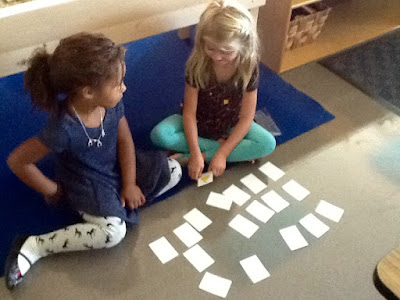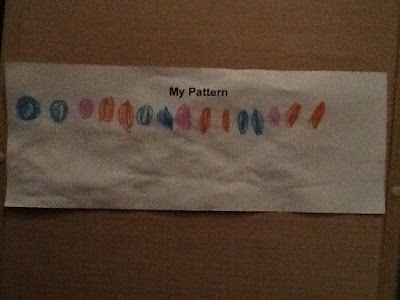I enjoy teaching mathematics, but in kindergarten it always seems to be a struggle to find a curriculum that is hands-on, standards based, rigorous and developmentally appropriate--all at the same time. In addition, most curriculum programs take the same approach to instruction: The teacher models a mathematical principle, the students engage in practice of the principle; either with a partner or alone, and then the students do a worksheet to show their understanding of the principle.
This model did not feel right to me and I was not convinced that the students were achieving a deep understanding of the mathematical principles they were being taught. I began to do some research and came upon a book called Teaching Student-Centered Mathematics.
This book completely changed the way I thought about the teaching of mathematics. Finally, I understood the underlying foundation behind the different mathematical strands of our curriculum. To say it was eye-opening would be an understatement!
However, this didn't solve the problem of the curriculum we currently had. I decided to approach our ACP committee for permission to rewrite our current curriculum from a problem solving approach, which is the approach recommended in this book.
Once I received permission, I spent the summer creating units that presented the curriculum in a different format: First, the teacher poses a problem to the students. Then, the students grapple with the problem; either in a large group, small group, with a partner or alone. After that, the students come together to discuss how they approached and solved the problem. Finally, the teacher clarifies any misconceptions, introduces pertinent vocabulary, makes anchor charts to support concepts and wraps things up by stating the essential understanding that should be taken away from the lesson.
The rest of my team agreed to try this approach with me, and we meet once a week to discuss how things are going, share student successes and struggles, preview upcoming lessons and discuss assessments. This collaboration is a vital part of teaching in this manner, as it ensures fidelity, provides a means for us to think about mathematics in a deeper way and allows to to make meaningful changes to the curriculum.
The one take-away from all of our meetings is that the students enjoy learning mathematics in this way. It is not always easy, and there is still the struggle of finding a way to reach all learners, but all in all, it is a win-win for us so far. I think the biggest challenge for me has been to teach students how to talk about their thinking, especially this early in the year. Often, it is a few students who carry the conversation, but I am hopeful that will continue to change as the students mature and become comfortable with the process.
Here are some pictures from our journey thus far:
Sorting and Classifying
 |
| Finding things that are the same |
 |
| The Great School Supply Sort: How can we organize all our supplies? |
 |
| A work in progress |
 |
| "I have all the glue sticks. Bring me your glue sticks!" |
 |
| The finished product |
Position and Location
 |
| Representing positional words on the playground |
 |
| Finding hidden treasure by using positional words to follow a map |
 |
| Creating our own maps |
Patterns
 |
| Creating placemats using pattern blocks to form a pattern |















































